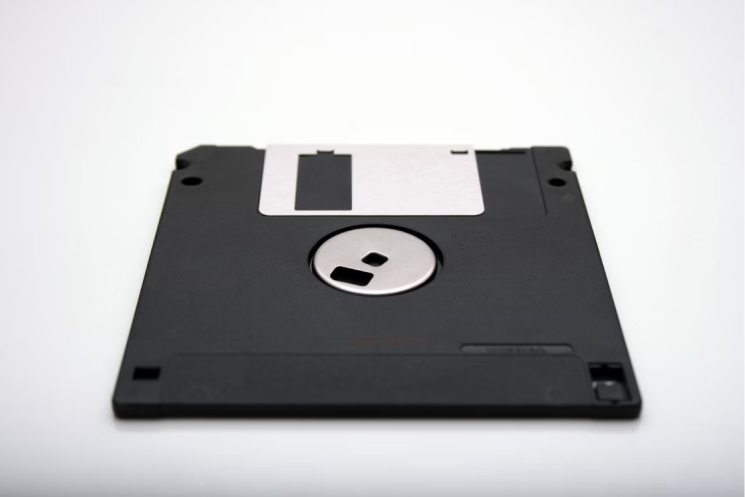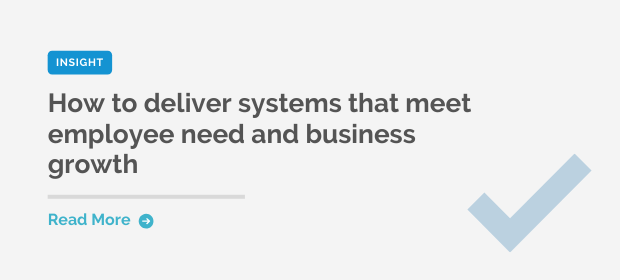On average, 31% of an organisation’s technology is made up of legacy systems. Maintaining those systems can be a costly burden, with an average of 60-80% of IT budgets allocated to keeping them running.
It’s estimated 90% of businesses are held back in terms of growth and enhanced efficiency due to old technology. And half of senior IT leaders state that legacy systems are the main barrier to digital transformation, blocking their organisation’s progress.
With significant funds spent on keeping archaic applications functioning, business growth hindered and sales lost, legacy systems are expensive. And in addition to the tangible financial costs, legacy systems can negatively impact a business in other ways.
The many costs of legacy IT
While the financial aspect of maintaining legacy systems is a major concern, there are other costs to a business if old technology is not appropriately managed or replaced.
Demotivated employees
Research has found that for 38% of workers, their happiness at work impacts their performance. And with more than half of UK employees dissatisfied with workplace technology, it’s clear that outdated, obsolete, and hard-to-use systems are affecting staff morale.
Impaired productivity
Slow, old tech impairs productivity, with 48% of UK employees wasting three hours or more per day due to inefficient systems. For an organisation with 5,000 employees that is equal to 960 working days per year.
Increased security risks
In the UK, 87% of IT decision makers say that retaining old systems leaves businesses more vulnerable to security threats because of incompatibility with the latest security innovations and authentication methods.
Poor customer service
With 40% of the UK working population now using smartphones and tablets to perform their jobs – the equivalent of almost 13 million people – the use of intuitive, fast, aesthetically pleasing applications is an everyday occurrence and expected by tech-savvy customers.
A business with hard-to-use, time-consuming client-facing interface, will soon lose customers to a competitor that offers a slick, user-friendly alternative.
Damaged brand reputation
An outdated user experience will not only lose existing customers, it will also repel new ones. A company’s reputation is responsible for at least half of its market value and one bad review can cost an organisation up to 22% of potential customers.
Difficulty analysing data
More than half of companies are adopting big data analytics, and almost all (95%) recognise the need to manage unstructured data. In this age of big data, leadership teams need accurate, relevant statistics and granular information to make informed business decisions.
Businesses running a number of separate legacy systems can struggle with a lack of centralised data. Data extracted from different sources can be overwhelming or difficult to obtain, leading to inaccurate or incomplete reports.
Limits innovation due to inflexibility
Legacy systems are often limited. This inflexibility hinders innovation and business growth as new operational or infrastructure ideas, services, or products can’t be tested or progressed.
A lack of innovation that fails to keep pace with evolving technology trends leads to bankruptcy, as the famous failed businesses Blockbuster, Blackberry and HMV demonstrate.
Why legacy IT is expensive
- ongoing management and resource
- multiple customisations and integrations to ensure disparate systems communicate with each other
- skilled tech support if applications use old code
- building and installing system extensions that exist alongside and integrate with current systems
- developing cross-platform interfaces (wrapper interfaces) if staff have to access multiple separate systems on a daily basis and are overloaded with interfaces
- supporting multiple undocumented customisations
- running numerous reports across different systems to extract data
- operational downtime for system upgrades or to fix issues
Add to the cost of maintenance: a sizeable recruitment expenditure due to a high turnover of dissatisfied staff; a high customer churn rate due to clunky legacy interfaces; the difficulty in attracting new customers due to a damaged brand reputation; and the expense of legacy IT considerably adds up.
Does legacy IT cost more than upgrading to new technology?
Transforming and upgrading technology can be expensive. But so can funding outdated and inefficient legacy IT.
The investment in new technology can cost less in the long-term than nursing along old systems. It will also boost productivity and profits, help to retain existing customers and attract new. Efficient, intuitive applications will also increase staff happiness and drive innovation rather than stifle it.
The benefits of transforming legacy IT: An example
AESSEAL is the fourth largest mechanical seal manufacturer in the world, employing 1,700 people across 104 countries.
It was reliant on a number of disparate legacy systems that had reached end-of-life, having:
- little central management or control with key data held locally preventing visibility and reporting of data across sector, market and site
- limited standardisation in processes across markets and sites
- lack of knowledge management between business functions preventing sales, engineering and management to work to their full efficiency
Investing in new technology and implementing a knowledge management solution had many benefits for AESSEAL, these included:
- increasing its invoicing speed by 72 times, from 35 hours to just 29 minutes
- supporting £170 million in annual sales
- drastically improving UX and simplifying processes
- increasing visibility, including data to rapidly improve performance of seals in client plants
- significantly reduced speed to market of a new enterprise software product suite
- giving a competitive advantage with the ability to create real-time, accurate quotations on customer sites
Stuart Welsh, Group IT Director at AESSEAL, said: “Our ability to respond to customer enquiries has massively increased and the resource required is substantially reduced. We’ve always been good at this, but our new software allows us to be absolutely excellent at it.”
Is legacy IT costing your business?
A legacy system that no longer meets the needs of your business and your customers, and which is no longer cost-effective to maintain, should be upgraded.
It is not only costing your business money, it is contributing to a disengaged workforce, dissatisfied customers, a poor brand reputation and a lack of innovation.
Investing in new technology will boost business growth, reaping benefits for the long-term.
Interested in finding out more about how you can upgrade your legacy systems? Get in touch with us today on 0113 398 4199, or email [email protected].




